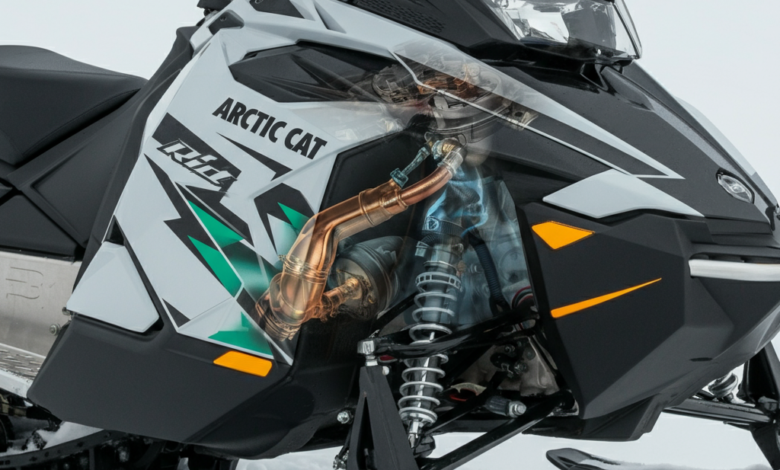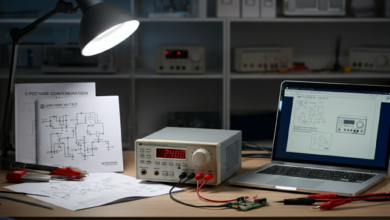Troubleshooting and Fixing Coolant Leaks in the 2021 Arctic Cat Riot

The 2021 Arctic Cat Riot is the ultimate snowmobile for those who live for winter adventures. Known for its versatility on both groomed trails and deep snow, the Riot has become a favorite among snowmobile enthusiasts. However, like any high-performance machine, it isn’t immune to issues, and one of the most common complaints from owners is coolant leaks. If left unchecked, a coolant leak can lead to overheating and severe engine damage.
This guide will help you understand the cooling system in the Arctic Cat Riot, identify a coolant leak, and learn how to repair and prevent future leaks effectively.
How Does the Cooling System in the Arctic Cat Riot Work?
The cooling system in the 2021 Arctic Cat Riot is engineered to keep the engine from overheating during intense rides in cold conditions. Here’s a simple breakdown of how it works:
- Coolant Circulation: Coolant flows through passages in the engine block and cylinder heads, absorbing heat.
- Heat Dissipation: The coolant then travels to the heat exchangers, often located along your sled’s tunnel base. The cold air and snow coming into contact with the tunnel dissipate the heat.
- Pump Movement: A water pump maintains the flow of coolant, ensuring continuous circulation throughout the engine and heat exchangers.
- Safety Measures: A thermostat ensures the engine operates within an optimal temperature range, preventing overcooling or overheating.
When the cooling system functions as intended, your engine’s temperature stays stable even during intense rides. However, when a leak develops, the system loses coolant, reducing its ability to regulate temperature effectively, which can lead to expensive repairs if not addressed.
How to Identify a Coolant Leak
Coolant leaks can be tricky to identify unless you know the warning signs. Here’s a step-by-step guide to help you spot a potential leak:
Step 1: Look for Visible Signs
- Puddles Beneath the Snowmobile: A green, orange, or pink liquid puddle underneath your sled is often a clear indication of leaking coolant.
- White Smoke: If you notice white smoke coming out of the exhaust or from under the hood, it may indicate that coolant is being burned or leaking.
Step 2: Check the Coolant Level
Inspect the coolant reservoir. If the level is consistently low even after refilling, it’s a clear sign there’s a leak somewhere in the system.
Step 3: Perform a Pressure Test
Using a cooling system pressure tester, apply pressure to your system and observe any drops over time. Inspect for any seepage from hoses or connections.
Step 4: Inspect Hoses and Connections
Carefully check all hoses, clamps, and fittings for visible cracks, damage, or loose connections, as these are common culprits behind leaks.
Common Causes of Coolant Leaks in the 2021 Arctic Cat Riot
Understanding what’s causing the leak can help you address the issue more effectively. Here are some common reasons coolant leaks occur in the 2021 Arctic Cat Riot:
- Damaged or Worn Hoses: Over time, the constant pressure and exposure to extreme temperatures can wear out or crack the coolant hoses.
- Loose or Corroded Clamps: Clamps that secure coolant hoses may loosen or corrode, causing leaks where hoses connect to the engine or heat exchangers.
- Cracked Heat Exchangers or Radiator Damage: Damage from trail debris or collisions can crack heat exchangers, leading to coolant loss.
- Faulty Water Pump: A failing water pump can cause coolant to leak, often near the front of the engine.
- Seal Failure: Leaks may occur in the gasket seals around the engine, which require immediate attention as they’re integral to the system.
Step-by-Step Guide to Repairing a Coolant Leak
Fixing a coolant leak can seem daunting, but with the right tools and guidance, it’s a manageable DIY task for most Arctic Cat owners. Here’s a detailed repair guide:
Step 1: Gather Necessary Tools and Parts
You’ll need:
- Replacement hoses, clamps, or parts depending on the leak source
- Screwdrivers, wrenches, and pliers
- A cooling system pressure tester
- Coolant compatible with the Arctic Cat Riot
- Rags or towels
- Zip ties or hose clamps
Step 2: Locate the Leak
Use the pressure tester or follow the trail of leaking fluid to pinpoint the location of the leak.
Step 3: Drain the Cooling System
Place a container under the sled to catch the coolant before removing system components. This prevents unnecessary mess and fluid loss.
Step 4: Replace Faulty Components
- Hoses: Remove damaged hoses and replace them with new ones of the correct size.
- Clamps: Ensure clamps are in good condition. Replace corroded or loose ones as needed.
- Heat Exchanger or Pump: If the issue lies in larger components, you may need to consult a service shop unless you’re confident in your mechanical abilities.
Step 5: Refill the System and Bleed Air
Once the system is repaired, refill it with coolant and bleed any trapped air to avoid airlocks that could compromise cooling efficiency.
Step 6: Test Your Work
Run the engine while monitoring for leaks. Double-check the coolant level after the engine cools down.
Tips to Prevent Future Coolant Leaks
Preventative maintenance is the key to keeping your coolant system in top shape. Follow these tips to avoid future issues:
- Regular Inspections: Check hoses, clamps, and the coolant reservoir before every ride.
- Flush and Refill: Periodically flush the system and refill it with fresh, Arctic Cat-approved coolant.
- Avoid Hard Hits: Be cautious of rocks, sticks, or debris on trails that can damage heat exchangers.
- Secure Hose Connections: Ensure clamps are tight and hoses are securely connected after any maintenance.
- Monitor Coolant Levels: Low coolant levels without evident leaks can indicate a slow leak or other issues.
Keep Riding with Confidence
Your 2021 Arctic Cat Riot is built to handle tough conditions, but regular maintenance is essential to ensure it runs as it should. By understanding the cooling system, spotting a leak early, and addressing common causes, you can enjoy uninterrupted rides.



